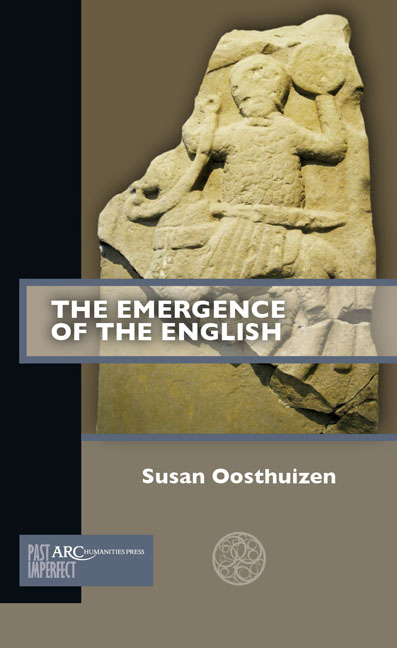Chapter 3 - Ethnicity as an Explanation
Published online by Cambridge University Press: 20 November 2020
Summary
Most accounts of late antique and early medieval England take for granted the distinctive and contrasting ethnicities— that is, collective social identities characterized by specific cultural traits—of Germanic immigrant groups and late Romano-British communities. Yet ethnicity is a complex and difficult concept to adduce in historical explanation. It is virtually indefinable since it is socially rather than biologically constructed, offering an implausibly large number of possible variables that are not fixed but change over time. People are not born speaking a particular language, or practising specific social customs. The greater the geographic range of identified with one or another ethnic grouping, the greater the variation is likely to be between the households, communities, and regions of which it is made up. Nor does ethnicity necessarily permeate all aspects of individual or collective identity. It is often invisible and irrelevant. Ethnicity is, moreover, dynamic, evolving, multilayered, and kaleidoscopic, shifting with interaction across innumerable contexts—age, gender, belief, status, and so on—and by social relationship, geography, and stage in life course. Depending on their ages, gender, and status, for example, even people claiming the same ethnicity and living in the same household may speak different dialects, eat dissimilar foods, and have diverse social traditions.
Such problems are exacerbated by the term “Anglo-Saxon” which implicitly assumes a specific ethnicity. As a consequence arguments, interpretations, and models for the period have a tendency to become circular. Many begin by assuming the general reliability of early documentary evidence. Even where it is acknowledged that the details of the adventus recorded by Gildas and Bede cannot be relied upon, the historicity of the adventus itself is accepted. That presumption frames the interpretation of evidence—already typologized as “Anglo-Saxon”—of artifacts, buildings, fields, burials, and so on of communities which are turned “fully-clothed into the actors mentioned in the historical sources.” For example, an archaeologist excavating grave-goods conventionally identified as “early Anglo-Saxon” is likely to interpret the individuals with whom they were buried as “Anglo-Saxons”; subsequent analysis of the distribution of grave-goods among the burials—for example by type of artifact, by gender of the individual, by his/her age—will produce conclusions about the character of a community assumed to be Germanic.
- Type
- Chapter
- Information
- Emergence of the English , pp. 59 - 92Publisher: Amsterdam University PressPrint publication year: 2019



